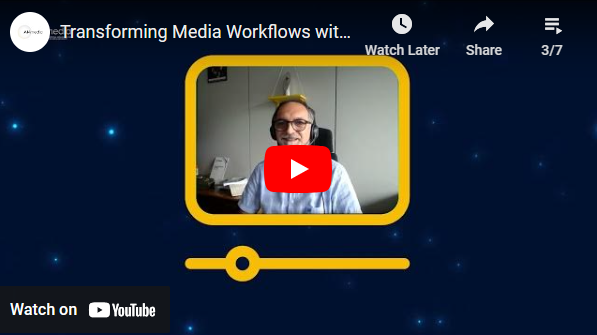This use case aims at supporting broadcasters’ newsrooms (and in general information and entertainment production) in reporting unexpected events like natural disasters (e.g., floods, earthquakes). Generally, whenever similar events occur, newsrooms need to readily publish and update fresh news in a very short timeframe. It is evident that the “time” variable plays a crucial role: providing and getting news on time can make all the difference and the entire production process is stressed. Together, content quality and reliability must always be properly and readily verified before flowing into the production chain. AI4Media aims to broaden the horizons along three perspectives involved in such just-in-time, high-quality production process.
First, timely coverage of unexpected events must be ensured. Several tools for professional news search and filtering are available, but they lack in providing new and engaging information as soon as an event occurs. However, auxiliary sources (e.g., social media and video sharing platforms) provide a plethora of information such as the nature of the disaster, affected people’s emotions and relief efforts. Unfortunately, that content cannot be used indiscriminately due to e.g., quality, privacy and reliability issues. AI tools for content quality enhancement (e.g., denoising, dehazing, inpainting), privacy protection (e.g., identity obfuscation) and manipulation detection are the keys to overcome such obstacles. Furthermore, AI computer vision technologies can speed up the creation of metadata, e.g., descriptive information about actions, places and things identifiable within the content, making it easier to be searched.
Second, broadcaster’s archives are a valuable source of information about how the landscape was in the past. However, archive material might be impaired and inadequately documented. Thus, appropriate AI-based technologies are needed for video restoration (e.g., artifacts reduction, colourisation) and metadata extraction (e.g., image and video captioning). Furthermore, drone technology can provide unprecedented viewing experiences, e.g., by gathering data from inaccessible or arduous areas. Archives and drones might work in synergy and even amplify each other’s results. Archive material might help in pre-setting operational drone’s parameters (e.g., flight paths, altitude, speed) while drone camera footage might be used to assist the video restoration process, e.g., by providing chroma information for video colourisation.
At last, open data, professional newsgathering services and broadcast archives are the main data sources that could be used to enrich the storytelling with e.g., graphics, statistics and reports about past events related to the present one. AI may help the editorial staff analyse data and identify patterns and insights from these sources, thus reducing the effort for data scraping, aggregation, mining and transformation.
Results of AI4Media are expected to bring benefit along the whole value chain, including journalists, editorial staff, TV production, rights and privacy management departments, as well as media researchers. Finally, to the audience, who will enjoy always new, modern, original and high-quality content.

AI4Media aims to empower the whole news production process: from news analysis to high-quality and impactful content creation
Discover more on this topic on the whitepaper on AI in Vision: High Quality Video Production & Content Automation.
Watch the Demo-Video
